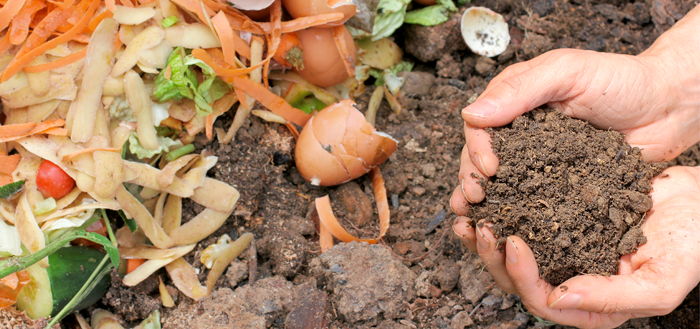
As Earth Day approaches, it's a good time to review current resource management & waste diversion innovations, ideas & initiatives. Would you like implement a higher percentage of "green spend" for your facility? Are there products and technological advances that you'd like to incorporate into your facility management plans, such as LED lighting systems or water conservation strategies?
Are your business or facility's waste diversion goals being met? Does your business or facility even have waste diversion goals – and do these goals include the diversion of organic waste through composting?
Composting is often referred to as “nature’s way of recycling” and diversion of organics, especially food scraps, is becoming mandatory in certain regions of the US, as cities (including San Francisco & New York City) are introducing plans towards achieving zero waste. Zero waste means that nothing gets sent to a landfill – and zero waste is achieved by way of source reduction, reuse efforts, and various recycling and composting programs.
Keep reading for some more ideas on how composting locally (while thinking globally) can help contribute to your Earth Day planning!
--------------------
Written & re-posted with permission by Nicholas Smith-Sebasto Ph.D., FOR Solutions, LLC | April 17, 2014
There is an axiom that has been used commonly for decades in the sustainability movement: think globally act locally.
While this sounds like a defensible idea, making the words reality often proves difficult.
Take for example a 2013 report by the Institute for Local Self-Reliance (ILSR), “a national non-profit research and technical assistance organization that since 1974, has championed local self-reliance, a strategy that underscores the need for humanly scaled institutions and economies and the widest possible distribution of ownership” titled Pay Dirt: Composting in Maryland to Reduce Waste, Create Jobs, & Protect the Bay.
In the report, the ILSR suggests, “Locally produced compost is a valuable soil amendment for local food production…” (p. 3). It further suggests, “What is needed is a highly decentralized and diverse organics recovery infrastructure that first prioritizes food rescue, backyard composting, on-site institutional systems, community composting, and urban and rural on-farm composting before the development of centralized regional facilities” (p. 23) and “the state’s composting operations, on a per-ton and a per-dollar-capital-investment basis, sustain more jobs than its landfills or incinerators…Hundreds of new jobs could be created if organic material was diverted from landfills and incinerators to composting facilities. The potential job creation would increase if a diverse composting infrastructure was developed, that included many small- and medium-sized operations” (pp. 42-43). The question becomes, how are small- and medium-sized food scraps composting operations created?
One of the most common techniques for composting the 3% of food scraps that are currently being recovered (yes, 97% are currently being wasted by being treated like valueless garbage instead of like the incredibly valuable natural resource that they are) is windrowing. Windrows are large-scale operations requiring many acres of land, expensive equipment and substantial labor, environmental monitoring and control of leachate, and a lot of time (often at least 6 months) to produce compost. Because of their land requirements, it is very difficult physically to create local windrowing operations; therefore, food scraps are also often transported great distances to locations that have the land for such facilities. Consequently, the carbon and ecological footprints of such facilities is larger than what is probably sustainable and/or desired.
Recent headlines regarding fines and lost permits for windrow food scraps composting operations (mostly because of odor issues, but also even because of wildlife nuisance issues) suggest that the concept of economy of scale may not be valid for food scraps composting. In other words, insofar as food scraps composting is concerned, bigger may not necessarily be better. This is precisely what the ILSR suggested for composting in general.
So, how do we create local food scraps recovery and composting operations?
The answer is on-site aerobic in-vessel rotary drum digestion! Such operations requirement a surprisingly small amount of land, comparatively inexpensive equipment and little labor, virtually no environmental monitoring and/or leachate control, and very little time (about one week) to produce compost. Because of their relatively small land requirements, such operations may be situated locally, near where the food scraps are generated, thereby dramatically reducing the need for transportation over large distances. As a result, the carbon and ecological footprints of such operations are small.
Posters used to appear in the Capitol Building of our Nation that read, Composting—along with saving energy, conserving water, and reducing fossil fuel use—is one of the most Earth friendly things you can do. The most Earth friendly way to compost food scraps is locally!
Find out more about FOR SOLUTIONS LLC: http://forsolutionsllc.com/
READ MORE:
100 Tips to Help Property Professionals Go Green for Earth Day
America Recycles Day – A Day to Think About Recycling
BOMA SD eNewsletter Article: America Recycles Day
Need a Workplace Recycling Program?
The Urban Quest for Zero Waste


